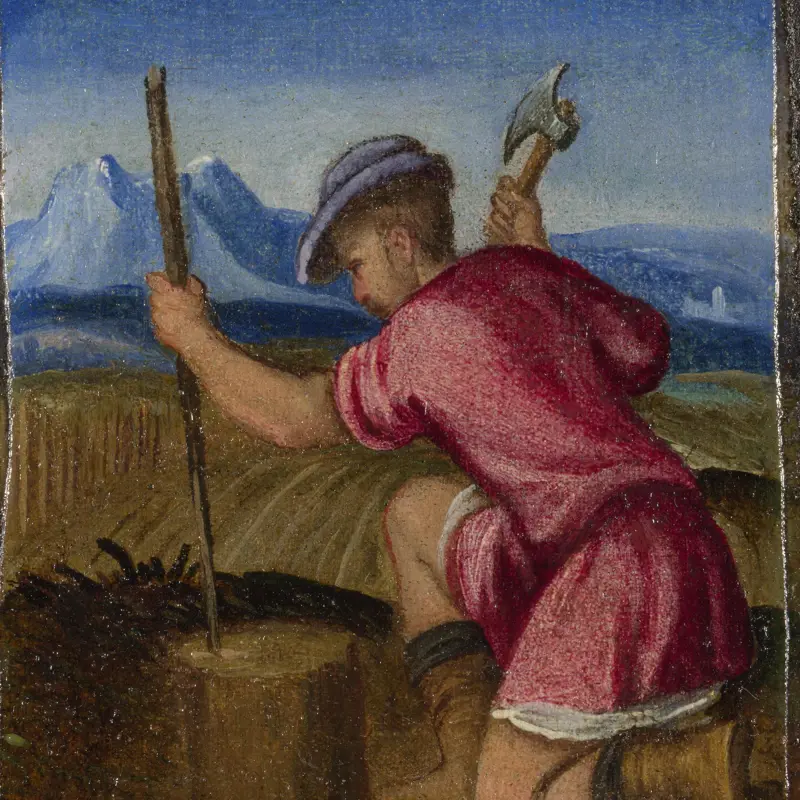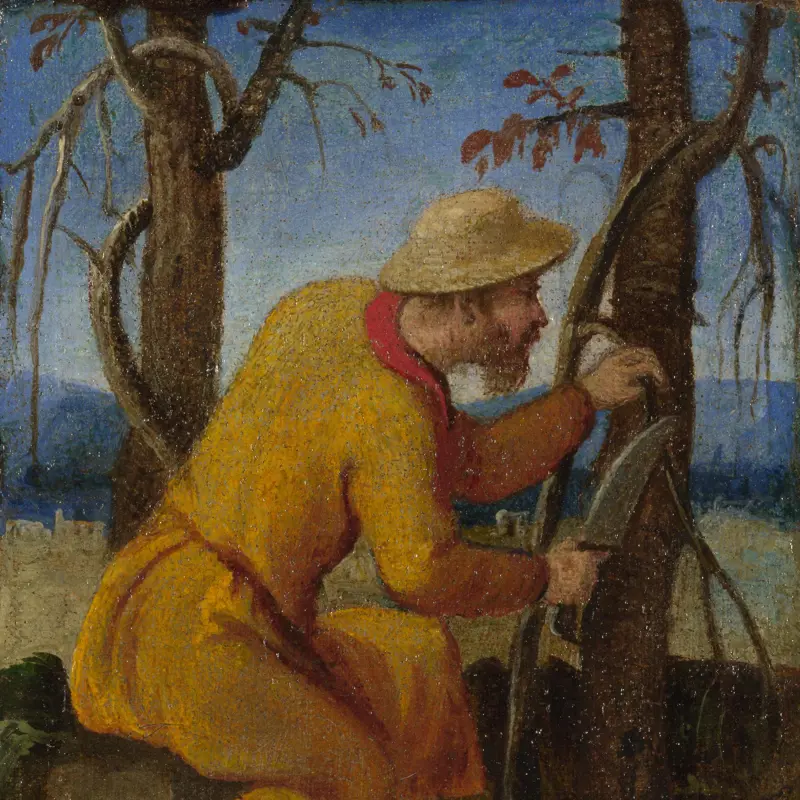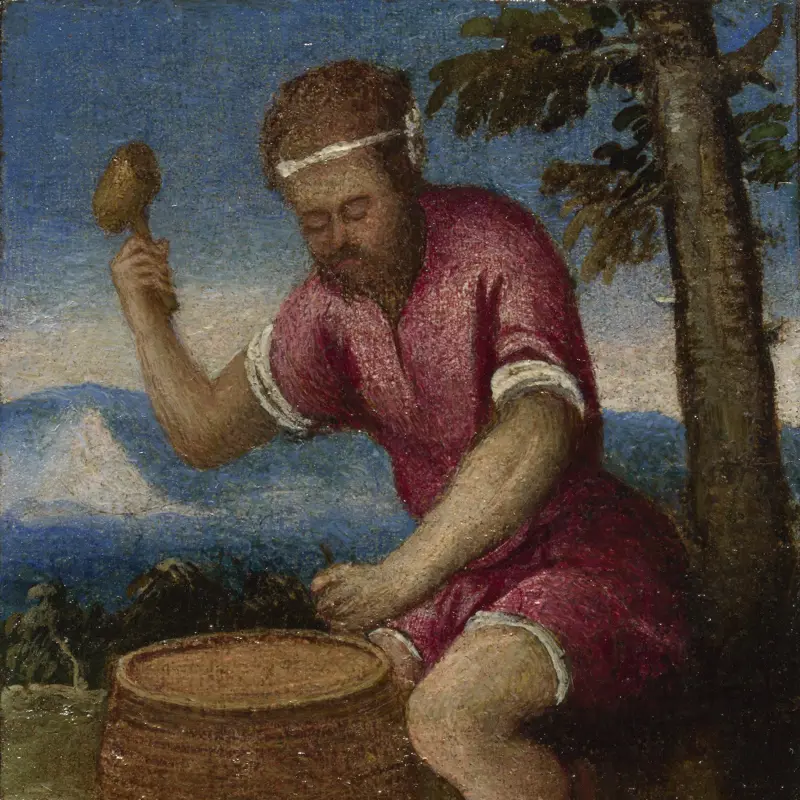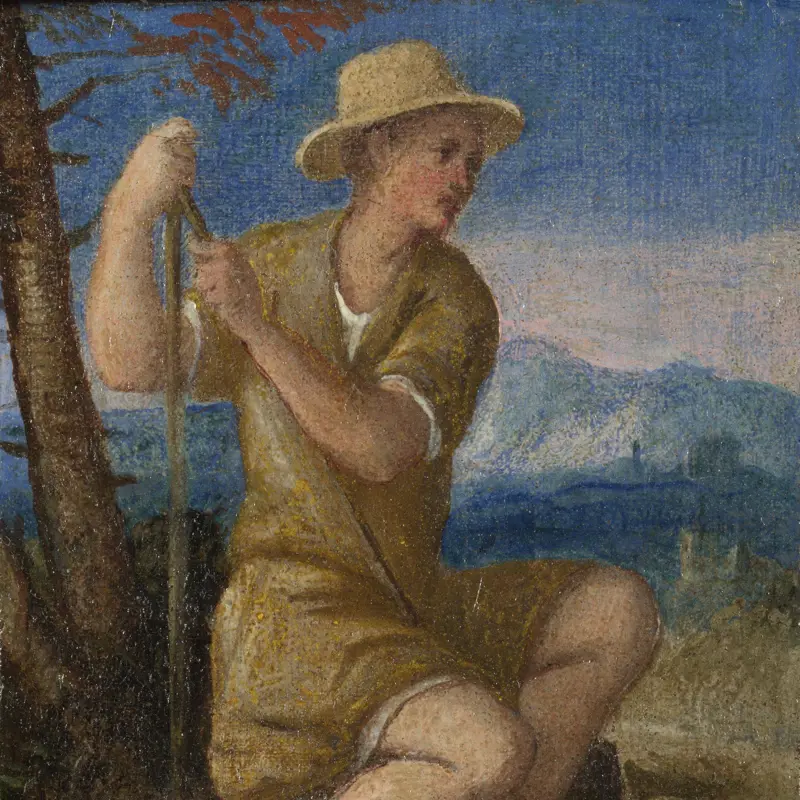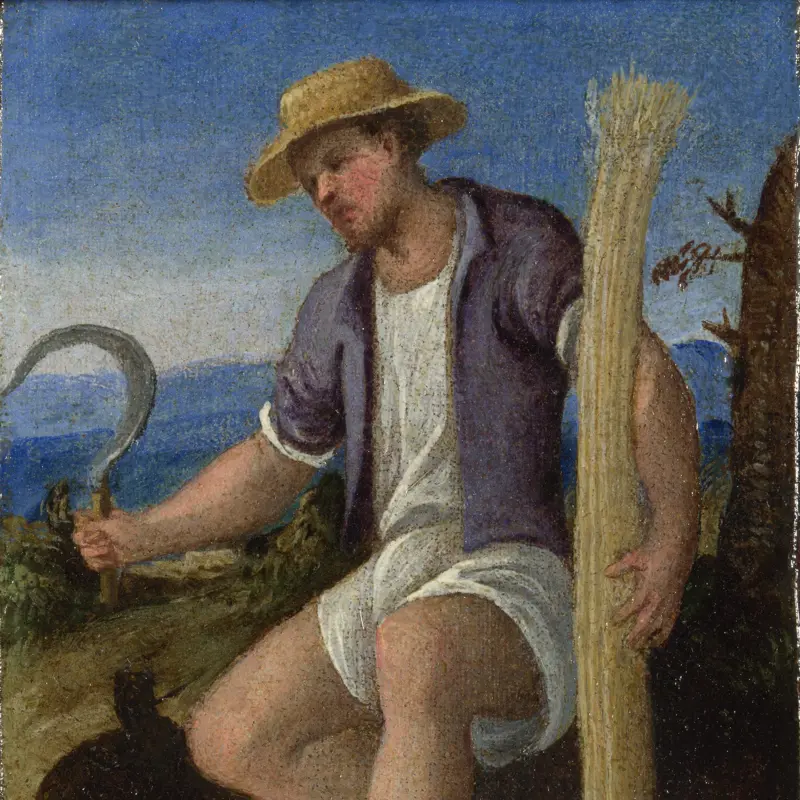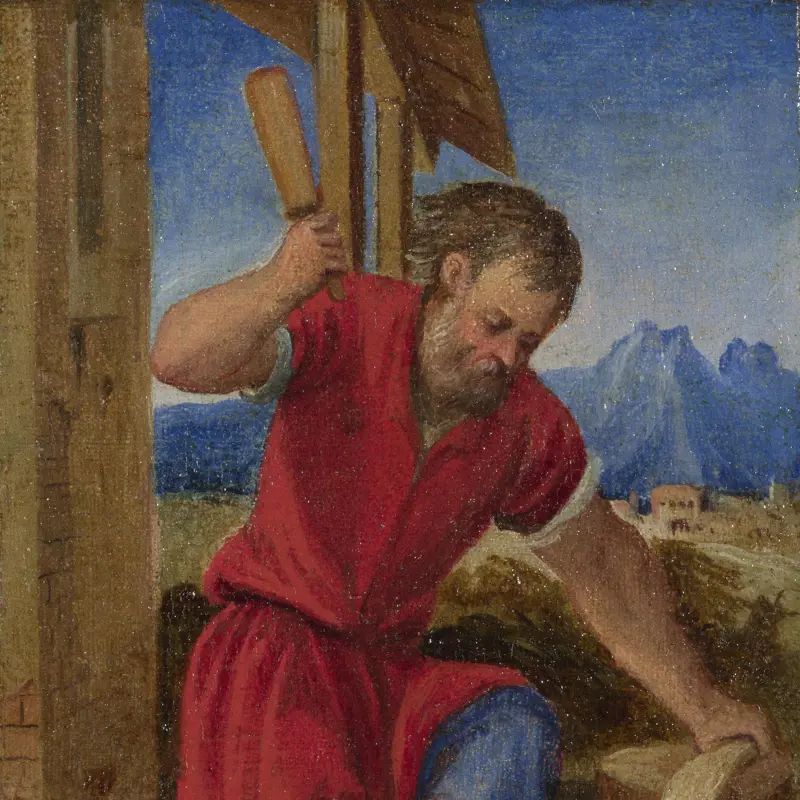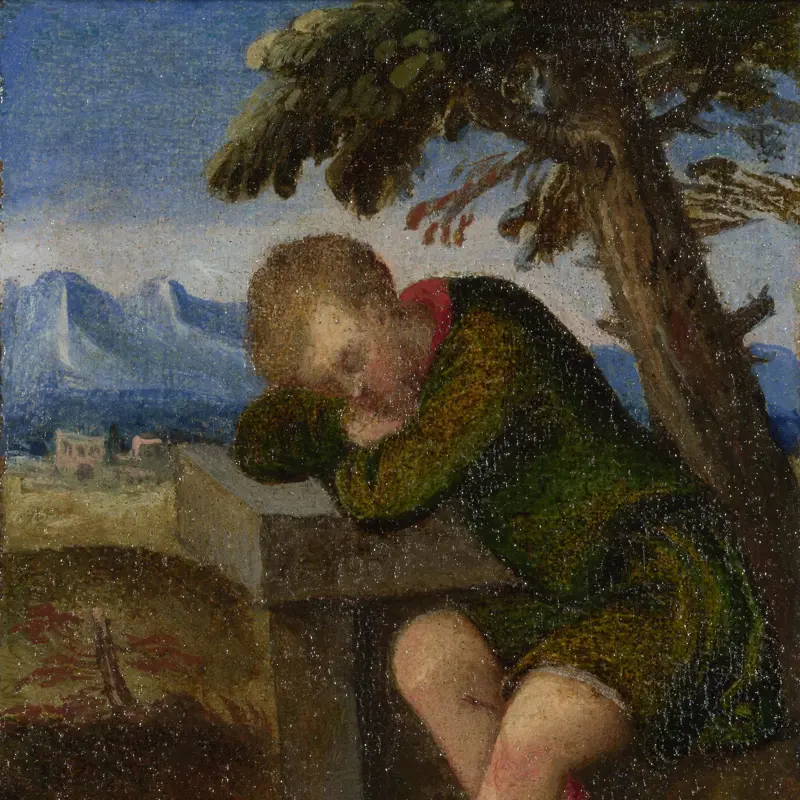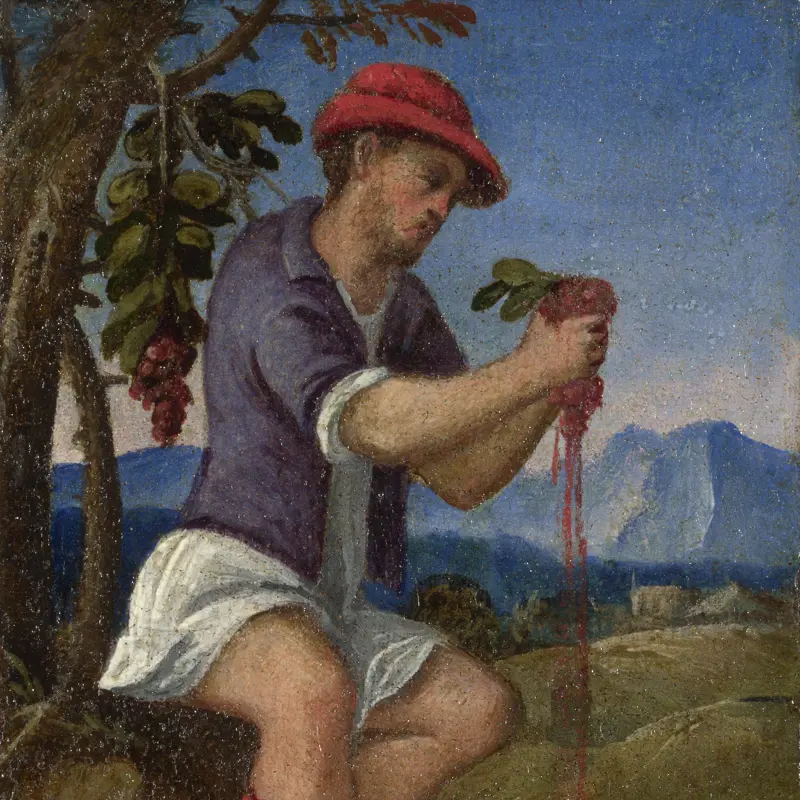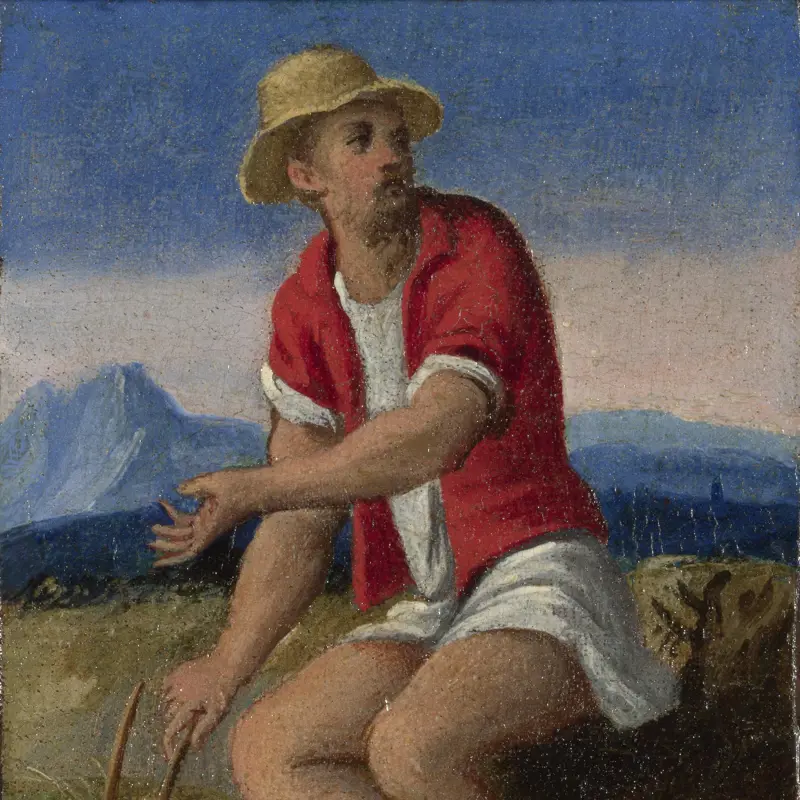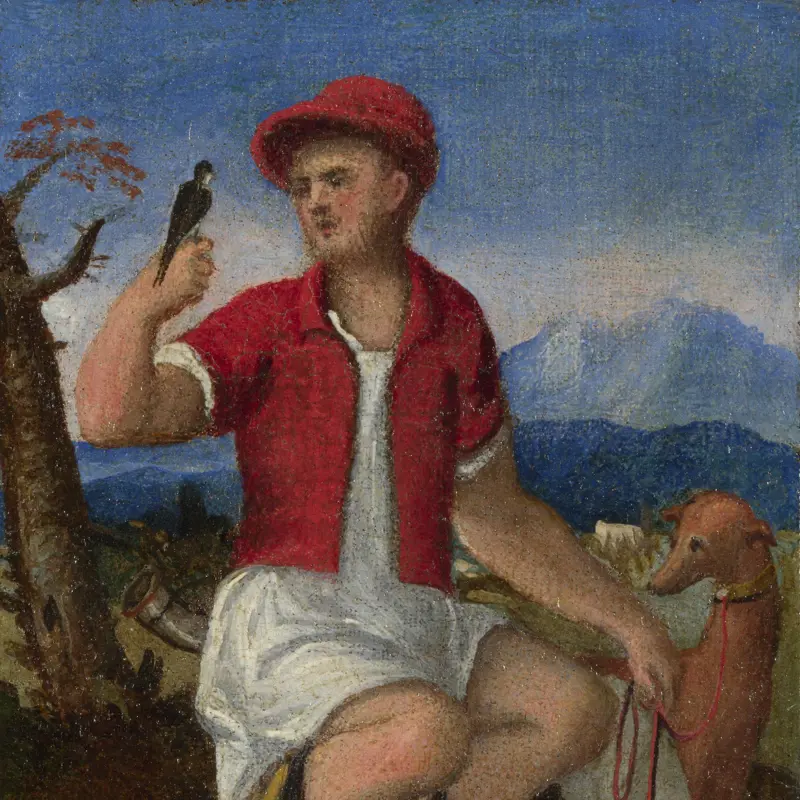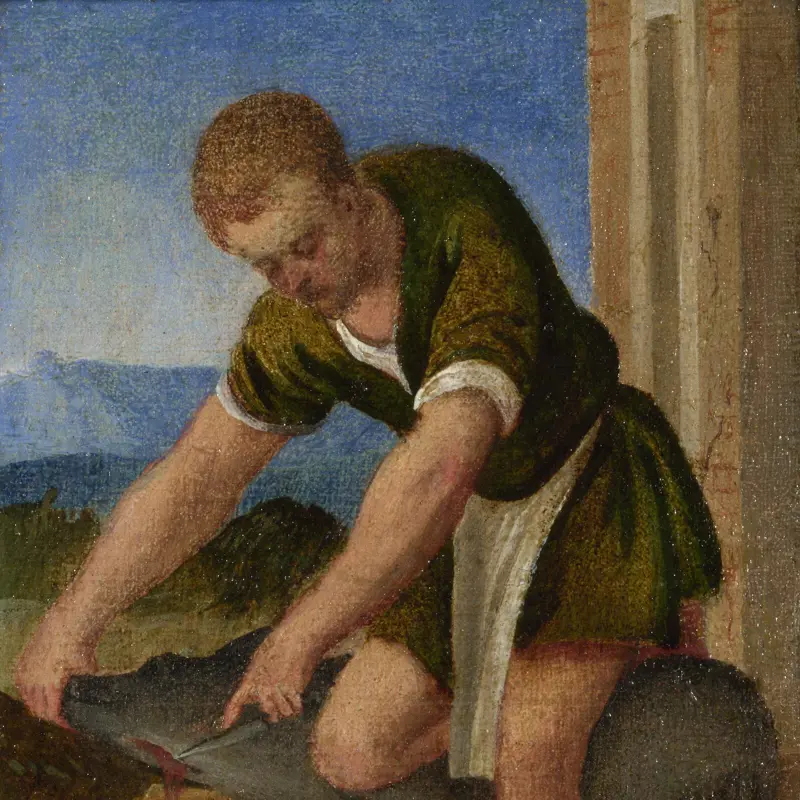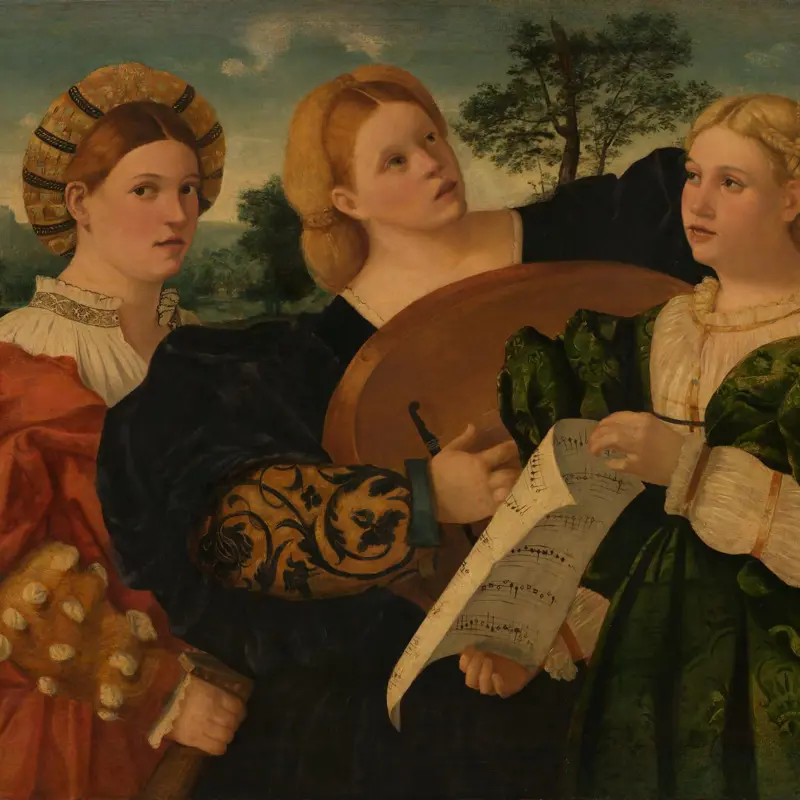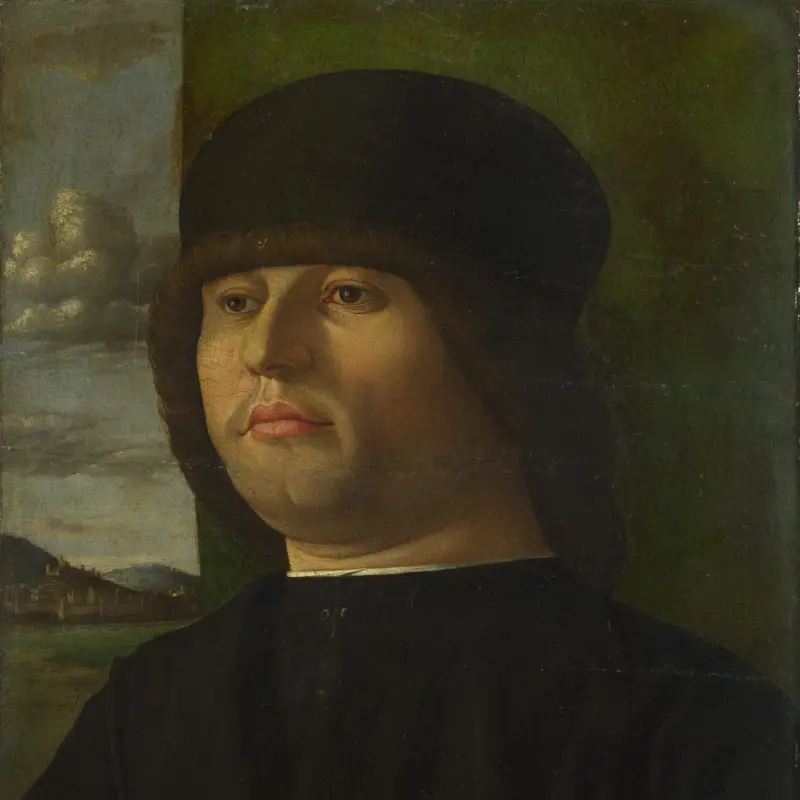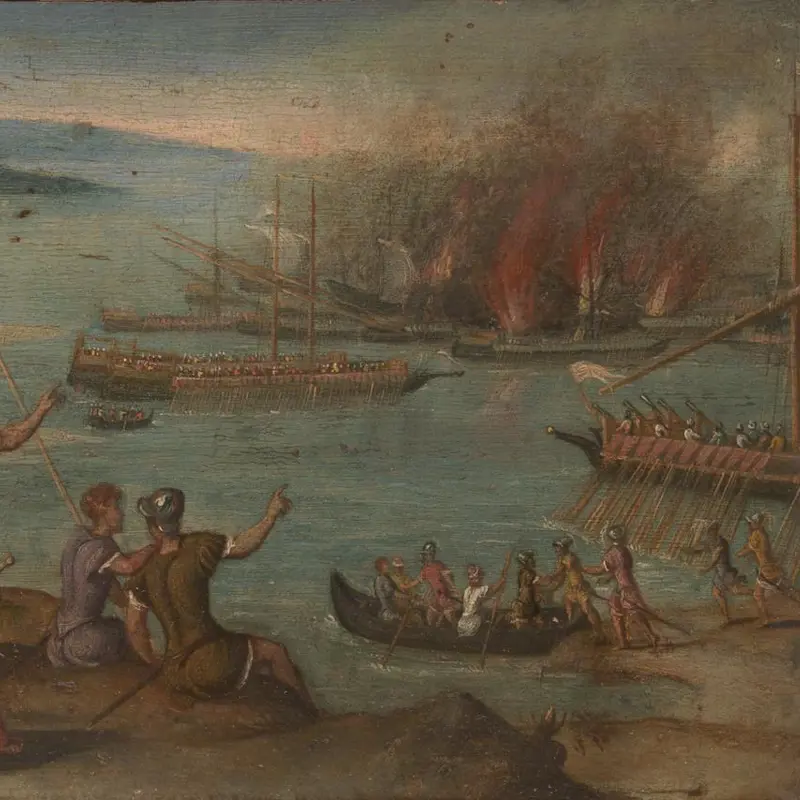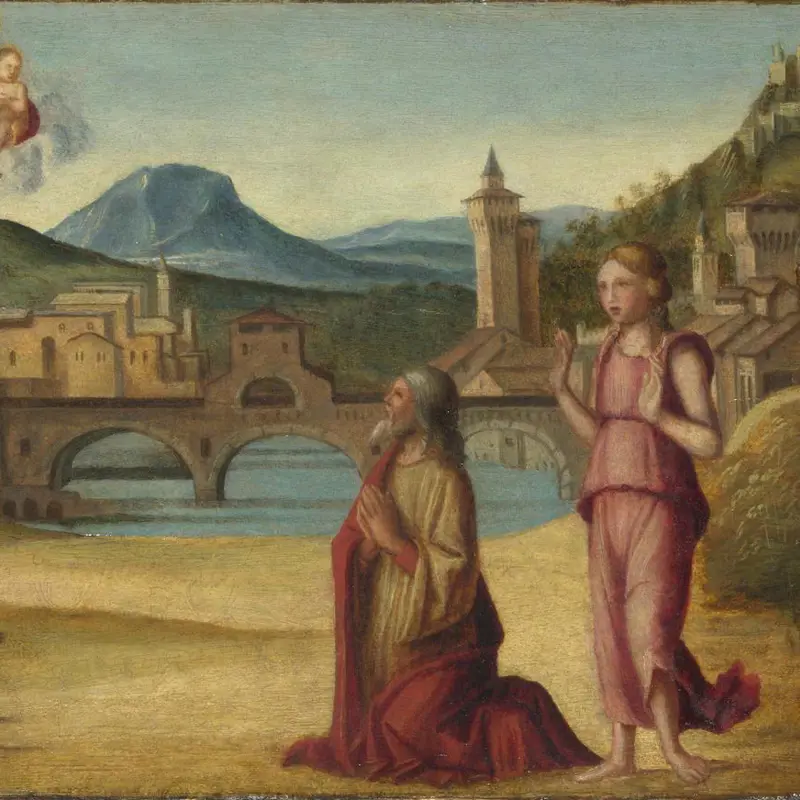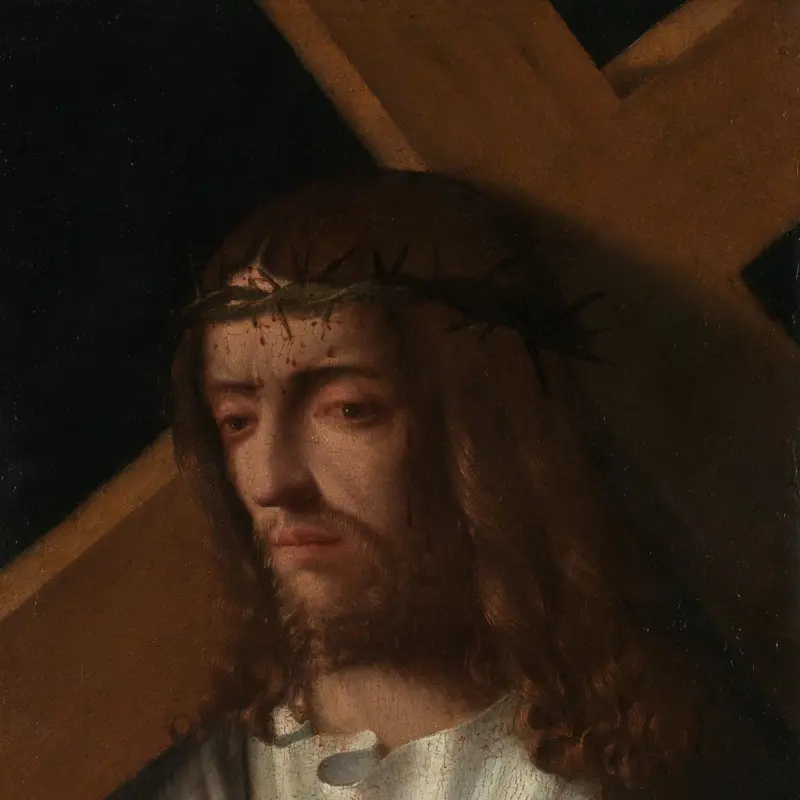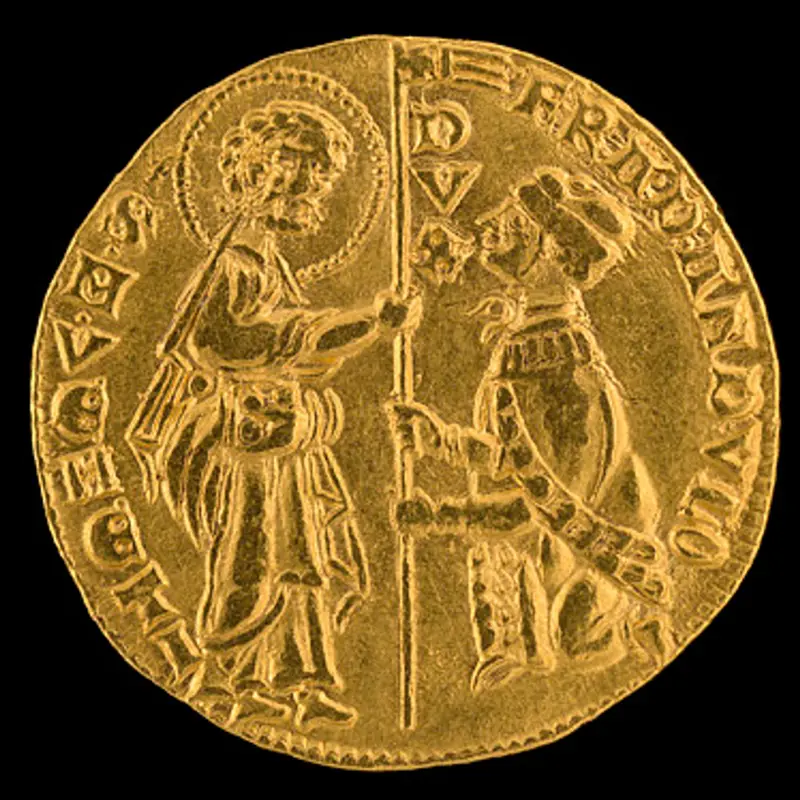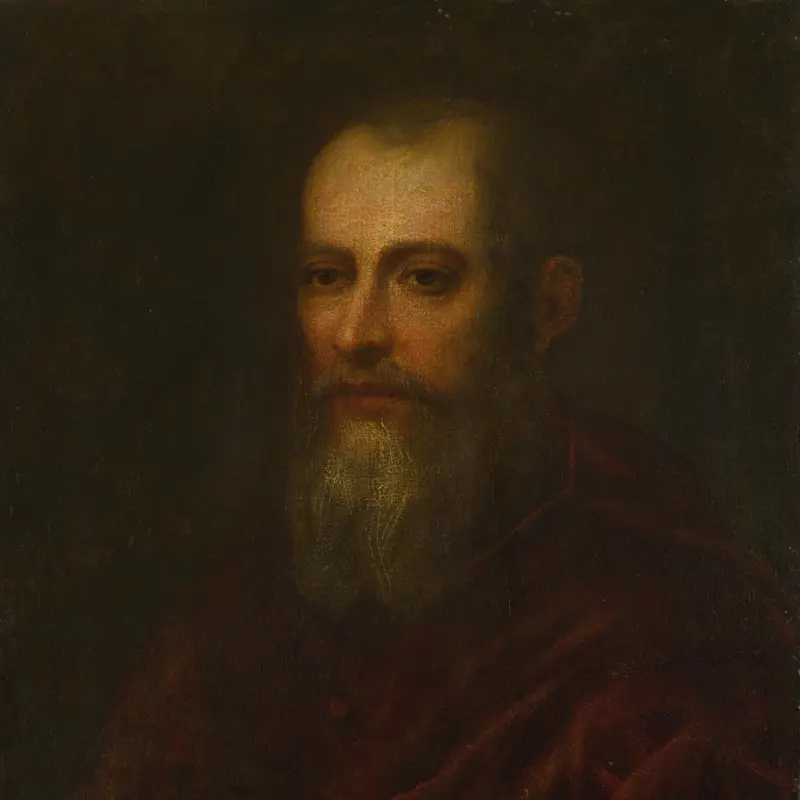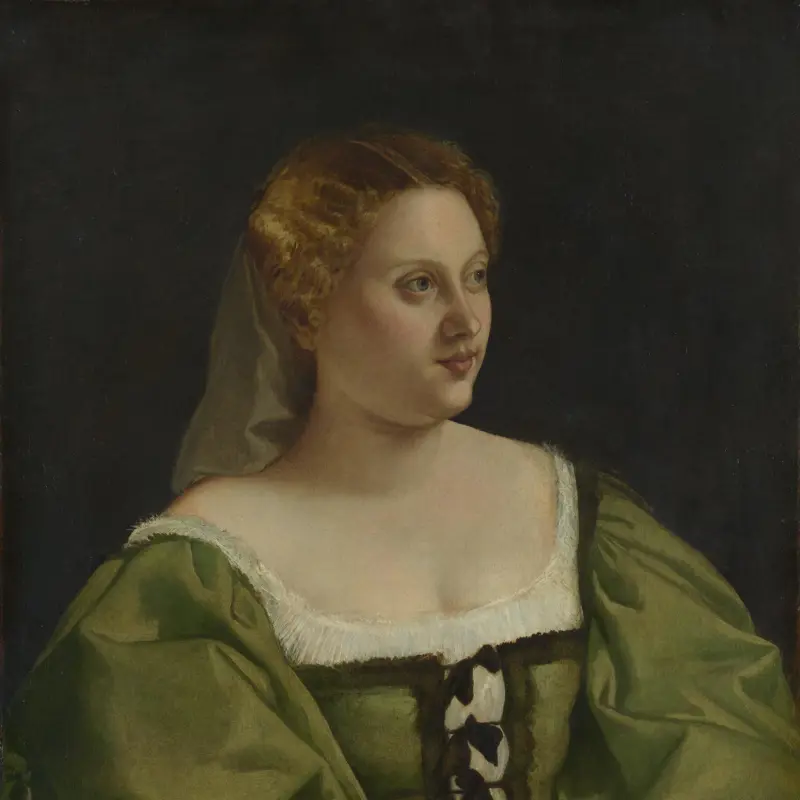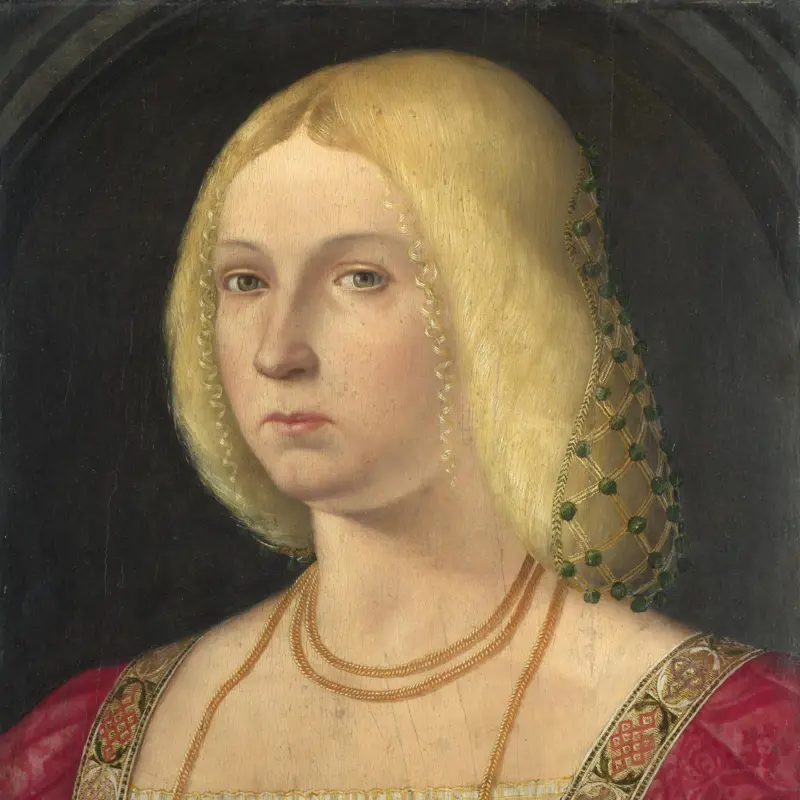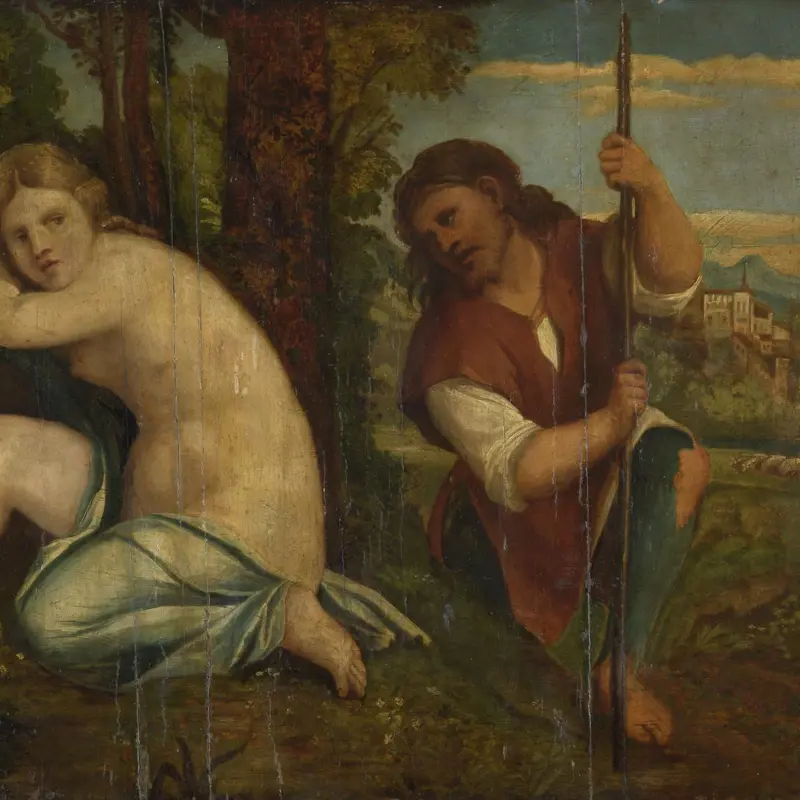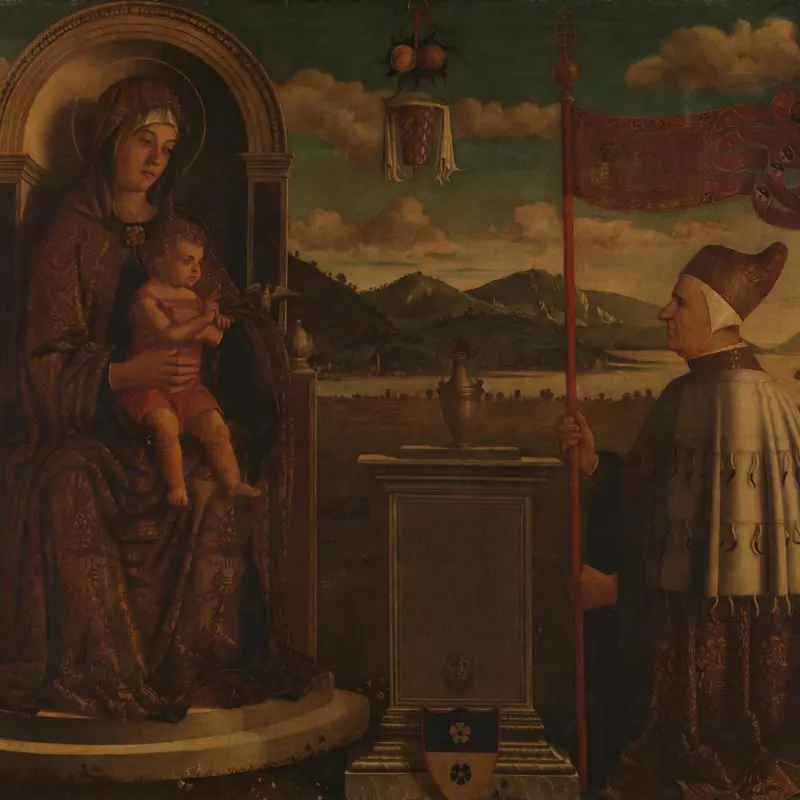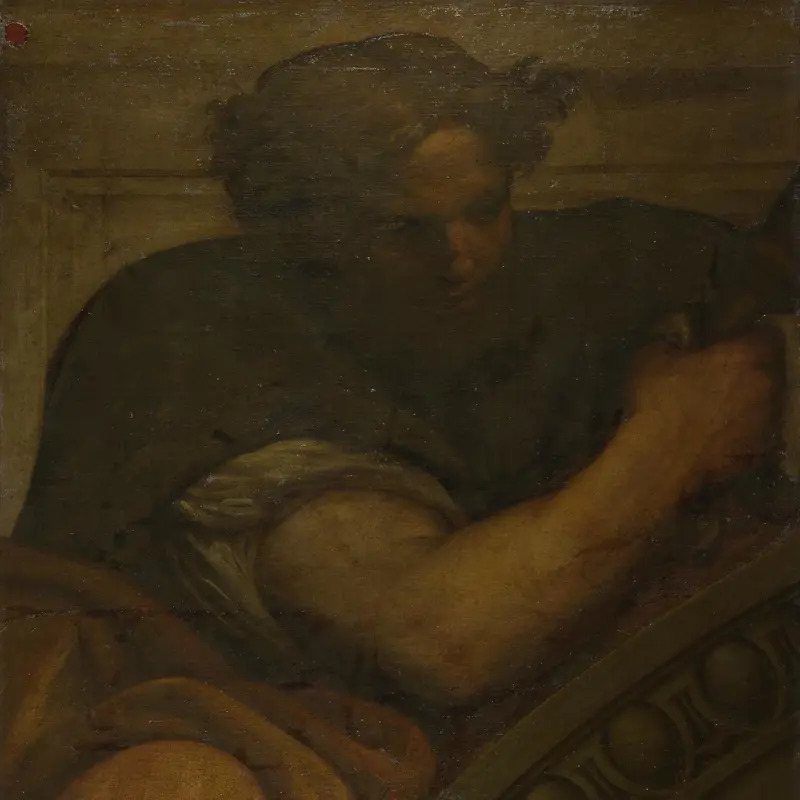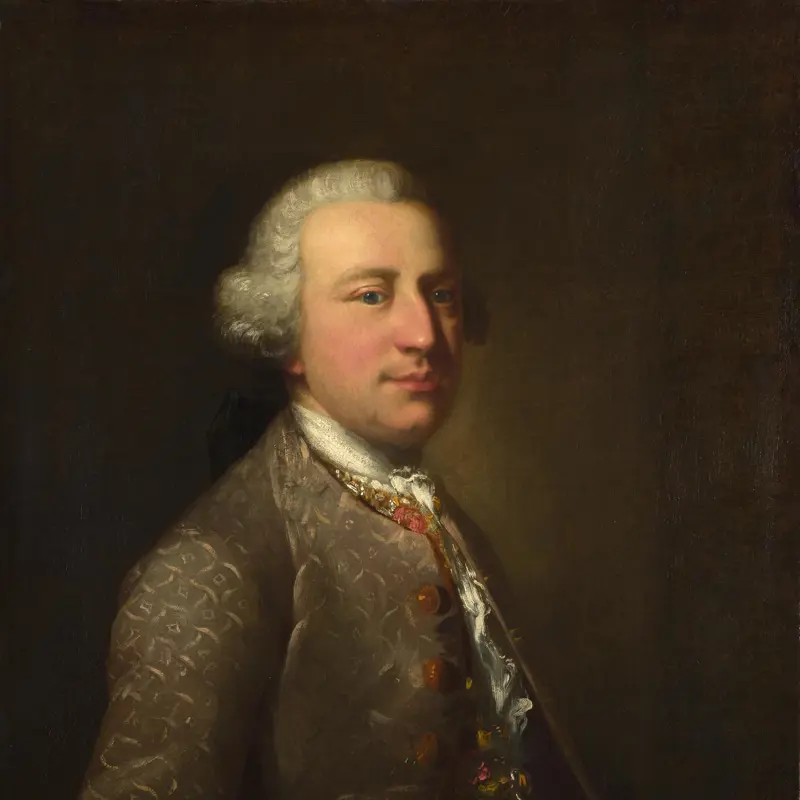Italian, Venetian, 'The Labours of the Months: September', about 1580
About the work
Overview
This is one of 12 small pictures that together show the ‘labours of the months’ – the activities that take place each month throughout the farming year.
A man sits beneath a tree through which a vine has been trained. A large bunch of red grapes hangs from a leafy stem. He uses both hands to squeeze the juice from another bunch into a wooden vat on the ground at his feet. The grape juice will be turned into wine and possibly stored in the barrel we see being made in an earlier scene.
The repeated pattern of strong reds, blues, white and green in this little picture gives it a charming decorative quality.
Key facts
Details
- Full title
- The Labours of the Months: September
- Artist
- Italian, Venetian
- Part of the series
- The Labours of the Months
- Date made
- About 1580
- Medium and support
- Oil on canvas
- Dimensions
- 13.6 × 10.6 cm
- Acquisition credit
- Layard Bequest, 1916
- Inventory number
- NG3110.3
- Location
- Not on display
- Collection
- Main Collection
- Previous owners
Provenance
Additional information
Text extracted from the ‘Provenance’ section of the catalogue entry in Nicholas Penny, ‘National Gallery Catalogues: The Sixteenth Century Italian Paintings’, vol. 2, ‘Venice 1540–1600’, London 2008; for further information, see the full catalogue entry.
Bibliography
-
1959Gould, Cecil, National Gallery Catalogues: The Sixteenth Century Venetian School, London 1959
-
1987Gould, Cecil, National Gallery Catalogues: The Sixteenth Century Italian Schools, London 1987
-
2001
C. Baker and T. Henry, The National Gallery: Complete Illustrated Catalogue, London 2001
-
2008Penny, Nicholas, National Gallery Catalogues: The Sixteenth Century Italian Paintings, 2, Venice, 1540-1600, London 2008
About this record
If you know more about this work or have spotted an error, please contact us. Please note that exhibition histories are listed from 2009 onwards. Bibliographies may not be complete; more comprehensive information is available in the National Gallery Library.
Images
About the series: The Labours of the Months
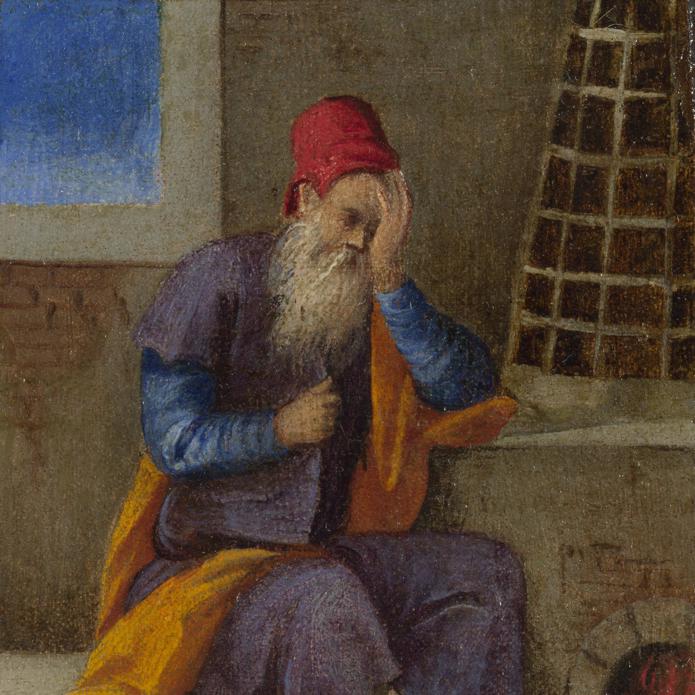
Overview
These 12 small pictures may have been made to decorate the recessed panels of a pair of doors, and seem to have been planned in pairs with the figures facing each other. They show the ‘labours of the months’ – the rural activities that take place each month throughout the year.
They are now framed in two groups of six, arranged in an order which reflects that in other, similar cycles and seems to make sense in relation to the seasons depicted, although we cannot be certain this is the original order.
January: A warmly dressed old man sits by a stove.
February: Trimming stakes with a hatchet.
March: Pruning the vines.
April: A cooper making a barrel.
May: A young man holds two rods.
June: A labourer holds a sheaf of corn he has cut with his scythe.
July: A labourer threshes grain with a flail.
August: Exhausted from fruit picking, a labourer sleeps beneath a tree.
September: The vines are harvested and the grapes pressed.
October: The field is ploughed.
November: A hunter with his hawk and hounds.
December: Slaughtering a pig.


